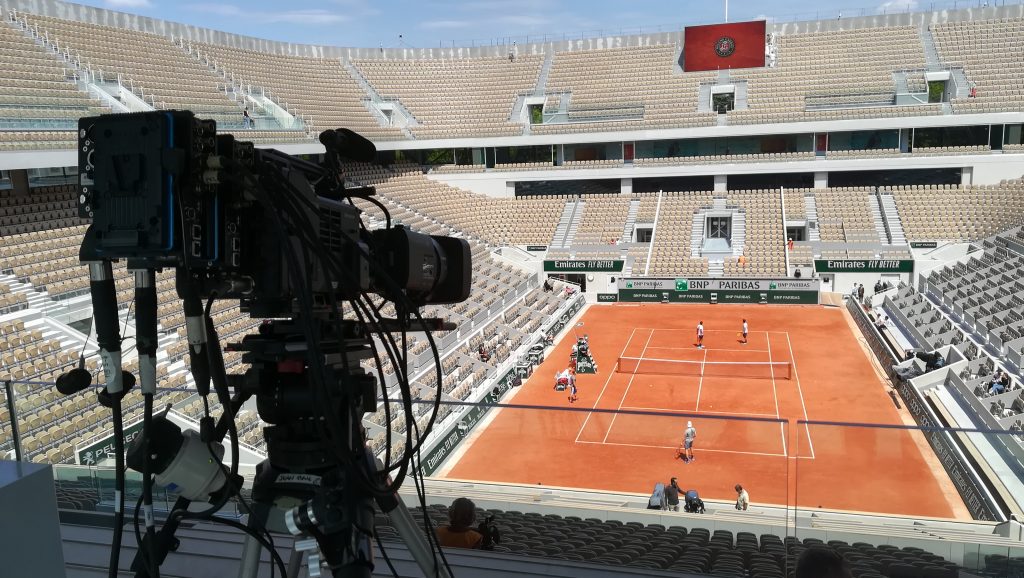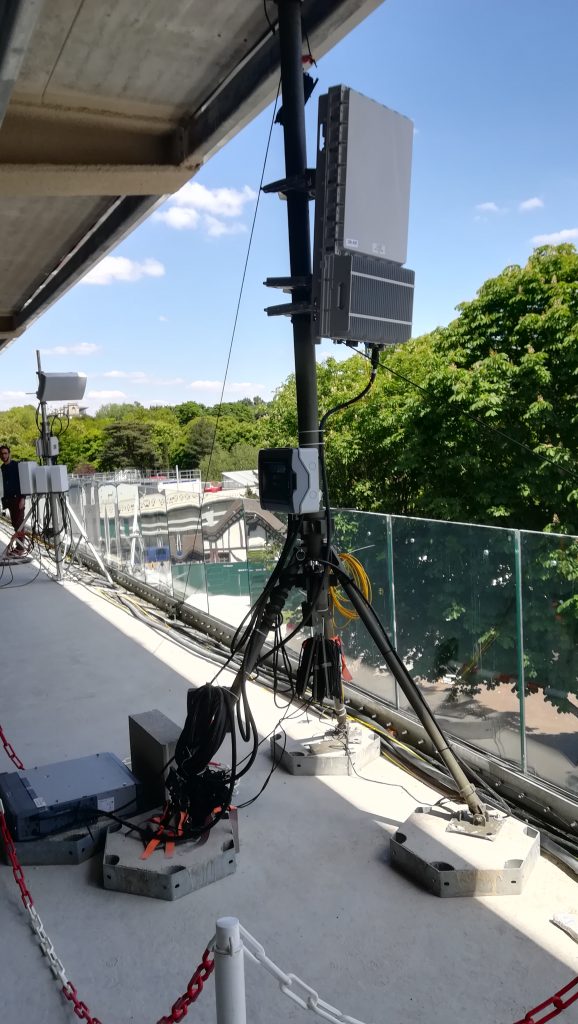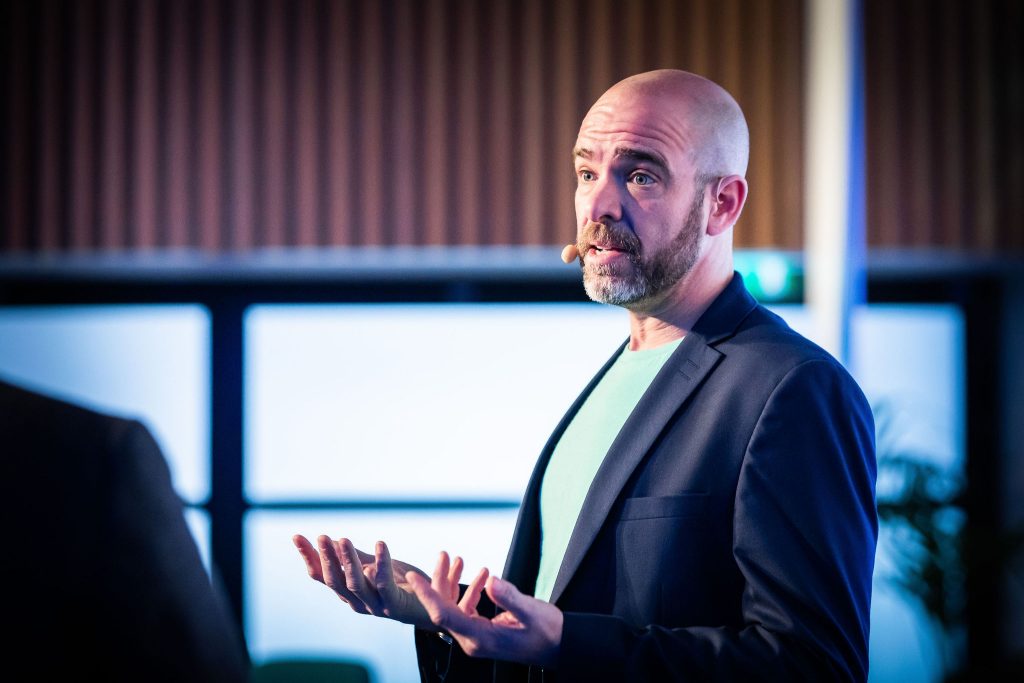
After more than 40 years of operation, DTVE is closing its doors and our website will no longer be updated daily. Thank you for all of your support.
5G set for slow-burn uptake
Operators are approaching early 5G rollout to deliver efficiency savings and enhanced broadband with the more exotic consumer apps lined up for phase two. Adrian Pennington reports.
There is no immediate ‘killer application’ for 5G. Its early consumer commercialisation should be seen as a way of evolving and expanding the established business of service providers. The prosaic objectives, at 5G’s birth at least, are a successful coexistence with existing network infrastructure and applying the lessons hard learnt over the previous decade.
“The early days are primarily to support some areas where there’s always been a limit to what 4G can do, in stadiums and train stations, for example,” says Matt Stagg, director of mobile strategy, BT Sport. BT-owned EE has launched 5G in six UK cities with ten to follow by end of the year. “5G will enable a much better experience in those high footfall areas.”
First-off-the-block launches by the likes of EE in the UK and Vodafone in the UK and Spain are using a ‘non-standalone’ deployment focused on using the combined power of 4G and 5G to boost mobile broadband (enhanced MBB)
Stagg adds: “We’re addressing urban centres where there’s a high population concentration. You have to be aware that [EE] is still heavily investing in 4G networks, so it’s about being able to provide the best experience for our customers.”
Many of Vodafone’s rivals, such as Movistar, Orange and MásMóvil in Spain, will not launch commercial 5G services until at least 2021. Telefónica is also taking a pragmatic approach.
“They are keen to wait until the technology progresses and to learn from launches in other markets before jumping straight in,” says Kester Mann, director, consumer and connectivity, CCS Insight. “There is consumer benefit in faster, more reliable broadband but 5G will be around for many years and the marketing kudos from launching early is only worth so much. Most operators see far larger revenue opportunities for 5G in the enterprise. The consumer use case is more opaque.”
Orange, for example, has run trials in several countries but is waiting for devices to be ready and available in more brands before commercialisation in 2020. “In some markets we’re waiting for regulators to release spectrum,” says Jean-Pierre Casara, 5G innovation expert at the company. “We expect the smartphone experience will be better but not a huge jump. 4G is good for many, many use cases. What is interesting is to go beyond that with partners and unlock innovation yet to be imagined.”
Operators are also wary of repeating the mistakes that blighted previous generational uplifts. Vodafone CEO Nick Read admitted that MNOs had only themselves to blame.
“As an industry we don’t collaborate well enough and in terms of customer need we are not fast enough,” he told MWC in February. “We were protectionist around text messaging revenues and let OTT players move take over the rich messaging space.”
Beware the dumb pipe
In 2008, 3G smartphones were hitting their stride and revenue for operators in Western Europe was at its peak. At the same time, mobile broadband was developing, and a significant amount of service revenue was lost.
“Over that period, cell operators in Western Europe collectively lost over a quarter of their service revenues while traffic over the networks grew 50-80% a year,” says Stephen Carson, director of business strategies at Ericsson. “The massive increase in traffic was not matched by revenue growth. The only way to keep pace with demand and not go backwards financially is to serve that traffic more and more efficiently. 5G is a big step in that direction.”
5G eMBB will deliver a significant reduction in cost per bit compared with 4G MBB, and this will continue to reduce (thanks to increased spectral efficiency, higher network utilisation, greater user numbers and higher average speeds). Access to new and wider spectrum also delivers efficiencies.
“The challenge for operators, particularly in Europe, is to have some sort of value proposition and some service that they are in control of rather have it taken OTT,” says Carson.
“The telco reality is that they have to provide ever increasing bandwidth capacity while not ending up a dumb pipe,” agrees Kaltura’s SVP Product Marketing, Gideon Gilboa. “This is a difficult balance to manage. They are looking for ways to ensure the total cost of ownership makes sense by making reasonable commercial propositions balanced with big investments in the network.”
Video is the king of content demand and it will be long into the future. NSR predicts that by 2022, 82% of all IP traffic will be video.
Video is also a prime mover for 5G with upwardly revised predictions by Ericsson that 5G coverage will reach 45% of the world’s population by end of 2024. This could surge to 65%, as spectrum sharing technology enables 5G deployments on LTE frequency bands. Where 60% of data traffic is video today, it believes that close to three quarters will be video in six years’ time.
“In some territories operators are trying to get around unlimited tariff structures,” notes Carson. “You can have all-you-can-eat data plans so long as the video is 480p. The bigger picture is that video will rise in volume and in quality and open up immersive experiences – but we’re at a very early stage yet.”
Raising ARPU
“Not matter how much bandwidth there is or how much the cost per bit comes down, spectrum is still finite,” Stagg says. “If you have payment models where a consumer pays for all their data then streaming 4K quickly becomes expensive. Where the operator such as EE offers all-you-can-eat video passes where a lot of content is zero rated, then the operator pays for bandwidth.”
Early reports suggesting that 5G services would be priced significantly higher than 4G appear to have been overplayed. According to Futuresource Consulting, many operators offering 5G for either the same price or only a small increase over 4G.
“Given the limited coverage of 5G, handsets are likely to be on the existing 4G network for the majority of the time currently, so [exhausting data caps] may not be a major concern in early adopters,” says analyst Simon Forrest.
“Primarily, the question is whether operators could raise ARPU by delivering video over 5G. But since video is regarded as part of the mobile data service, consumers are initially unlikely to consider delivery over 5G as a major differentiator. This would challenge operators wishing to improve the monetisation of such services. However, there are advantages to being able to receive uninterrupted live broadcast streams, especially sports and live events, which present revenue-generating opportunities if packaged appropriately.”
 Partly to keep costs down, BT Sport argues against 4K over mobile since no-one can see the extra pixels, even on a UHD smartphone.
Partly to keep costs down, BT Sport argues against 4K over mobile since no-one can see the extra pixels, even on a UHD smartphone.
“We believe the optimum format for the small screen is HD HFR [high frame-rate] and HDR,” says Stagg. “We don’t advocate 4K other than for casting to larger screens in the house over WiFi. This is the strategy for BT Sport and it should be for every operator.”
5G also opens an opportunity to drive fixed line subscriptions to the home by connecting a 5G router to the set-top box or smart TV in the living room and delivering enhanced TV over the last mile.
“We ran some field trials in Romania last year for last mile delivery of high-speed broadband in the mmWave spectrum which worked very well,” says Casara. “It’s probably more a use case in eastern Europe where cable and FTTH are still limited outside of the main cities.”
Cable providers too can put 5G cells into street cabinets and cover the last 500 yards where replacing coax with fibre or enhancing it with DOCSIS 3 is a less viable option.
Stagg urges the industry to be agnostic to the underlying technology and provide “the optimum experience at commercially viable cost. If it’s going to cost a million pounds to dig up a road and we can use a wireless tech that delivers better capacity to the home then this is a good use case. We’ve done a lot of testing on wireless routers. We need to decouple the underlying tech and use whatever makes most economic sense and provides the best experience.”
Tipping point
Arguably it will be the introduction of the full next generation 5G core network, enhanced device chipset capabilities, and increased availability of 5G-ready spectrum which will kick-start more exotic consumer applications.
EE has scheduled this phase 2 rollout from 2022 and promises “truly immersive mobile augmented reality, real-time health monitoring, and mobile cloud gaming.” It is also a vital step to the convergence of fixed, mobile and WiFi “into one seamless customer experience.”
A report by Ovum, commissioned by Intel, suggests 2025 will be the ‘tipping point’ for 5G in entertainment and media. By then, 57% of wireless revenue globally will be driven by the capabilities of 5G networks and devices, rising to 80% by 2028 by which time M&E experiences enabled by 5G will generate up to US$1.3 trillion or almost half of the projected US$3 trillion in wireless revenues overall.
Augmented reality is top of the list. BT Sport has AR sports related experiences for both at home and in stadia in the works.
“The potential is huge,” Stagg confirms. “The ability to enhance sport is phenomenal by, for example, overlaying stats of players taking a penalty – live.”
Early AR experiences are imagined via smartphone but BT Sport is casting future interaction toward some form of lightweight glasses.
Telcos are also trialling virtual reality harnessed with 8K capture live streamed over the network. Orange’s partnership with France Télévisions took this to the next stage at Roland-Garros with a demo mostly to devices spread over the stadium.
“We wanted to push the envelope on bandwidth and see how live 8K encoding would cope,” says Casara. “We concluded that 8K is a good format to start with for VR using tiling technology to encode and send just the parts of the image the viewer is looking at.”
Audible AR could evolve in tandem with 5G ‘hearable’ devices that overlay spoken information from an AI-enabled voice assistant to augment the real-world environment in real-time.
“With 5G connectivity and location-based awareness via an on-board GPS, spoken direction will become an essential skill for hearable products, capable of directing users through spoken step-by-step instructions,” says Forrest. “Advertisers will be quick to harness the opportunity to speak to wearers, conveying precisely timed and relevant information based upon geolocation.”
Given that 5G requires densification of the network infrastructure, it becomes possible to more accurately identify the locations of consumers via cell tower connection.
“This may lead to advanced advertising and improved targeting, perhaps delivering information and advertising based upon time of day and location to generate uplift in engagement,” says Forrest.
In parallel, this should open up more flexible pricing models to target the generation of consumers who don’t want lengthy fixed-term contracts.
“This generation is used to bite-sized video and Netflix-style subscriptions and want the same from their connectivity provider,” says Adam Davies, product manager, Synamedia. “We’ve been talking about being able to build those flexible consumer models for years and with 5G, service providers have the network to make localised, personalised and flexible video packages happen.”
Next-gen entertainment
Intel predicts that AR and VR will deliver cumulative revenues of US$140 billion between 2021 and 2028.
Immersive and new media applications which don’t even exist today are estimated to generate US$67 billion a year by 2028 – equivalent to the value of the entire global media market in 2017, including games, music and films.
Perhaps the most significant new consumer application twinned with 5G is cloud gaming. Some see it as more of a game-changer than video since real-time multiplayer gaming isn’t possible, certainly over mobile, without it. One of the first games to tap into this is Harry Potter: Wizards Unite from Niantic which claims to render AR in tens of milliseconds.
Synched with this is the need for edge computing in which logic is moved out of the device into the cloud. If you can process more encodes and transcodes there you can create thinner client apps, effectively streaming from the edge with less rendering on the device.
However, Forrest suggests that the industry is confused over what could be done with a 10Gbps low-latency WiFi network versus what should be done with a 10Gbps low-latency 5G mobile network.
“The parallel development of WiFi 6 – 802.11ax – promises to closely match the performance of 5G for local/indoor communications,” he says. “This provides an alternative choice for networking of VR, AR and other applications, especially given that high-bandwidth 5G services are carried over mmWave frequencies that won’t easily penetrate walls, so indoor coverage will be close to non-existent.”
The 5G network will be meshed with the Internet of Things, allowing operators to rollout new consumer services hooked into smart cities. Apps for parking, waste disposal, real-time traffic management and the leisure/tourism industry can all be introduced as part of a wider city-wide data grids.
For EE, this falls into Phase 3 of its 5G rollout, from 2023, when “ultra-reliable” low latency communications, network slicing and multi-gigabit-per-second speeds are introduced. This phase will enable the “tactile internet” it predicts, where a sense of touch can be added to remote real-time interactions.
“Everybody is talking about new immersive AR/VR forms all the way out to volumetric 3D holograms but in order to have such experiences you need six degrees of freedom to look all around you and see superimposed data on reality,” says Carson. “You need extreme low latency and a shift of heavy compute processing to the edge to feed all the calculations for rendering. You might also need new forms of compression.”
5G may not even be good enough in the next decade to cope with the plans telcos have scoped out for it.
“The increasing number of new applications such as VR/AR, autonomous driving, IoT, and wireless backhaul as well as newer applications that have not been conceived yet, will need even greater data rates and less latency than what 5G networks will offer,” states NYU Professor Ted Rappaport, in a paper published by the IEEE.
US government agency the FCC recently voted to grant licences for research into submillimetre wavelengths in the terahertz frequency range to unearth 6G bandwidth capacities.
If the risks of working in potentially radioactive frequencies are overcome, then 6G – and ultimately 7G and beyond – promises such high capacity and instant data transmission that – it has been speculated – it could deliver artificial intelligence to wireless devices operating at the speed of the human brain.
In focus: 5G AS A DTT replacement? Not yet
5G will play a role in eventually replacing digital-terrestrial broadcasting although this is expected to be neither short term, a top priority or universal.
“The requirement is free-to-view, not free-to-air,” says Matt Stagg, director of mobile strategy, BT Sport, who notes the resilient popularity of the linear broadcast schedule. “But as viewing shifts OTT and broadcasters looks to move more things to IP we’re going to reach a point where, with fewer viewers on terrestrial, DTT becomes cost prohibitive. If your percentage of viewers goes down yet your costs of maintaining the broadcast network remain, at the same time as CDN costs rise, then inevitably things will change.”
Operators and broadcasters are collaborating on projects to investigate the overall benefits and efficiencies of 5G broadcast or Enhanced TV (enTV). Examples are 5G-Xcast (a Horizon 2020 and 5G-PPP project); Finland’s 5GTN+ programme; and 5G Today, ongoing in Bavaria, operating trial broadcasts over 5G using the 700MHz spectrum. “One of the objectives is to identify the best solutions to exploit the enhanced capabilities of 5G, notably using the new radio interface [5G-NR] for broadcast TV and digital radio services,” explains analyst Simon Forrest of Futuresource Consulting. “Television over 5G is especially interesting for Europe, as there is an immediate deployment potential using the 700MHz spectrum band previously occupied by terrestrial services.”
The 3GPP Release 14 specs already meet all EU digital TV broadcast requirements; technical studies conclude this is approximately twice as efficient as DVB-T which would open up spare capacity in the spectrum for alternative use cases. “In this instance, the remaining DTT frequencies (470MHz to 694MHz) could be reallocated to 5G, with TV broadcasts migrating from DVB to 5G broadcast technology,” says the analyst. “This consumes less bandwidth, leaving the remaining spectrum free for mobile use.”
Gideon Gilboa, SVP, product marketing, Kaltura notes moves among DTH providers to switch services from satellite to IP. Among them, Sky’s launch of Sky Q over IP in Austria and Italy and a DirecTV DTV package with an IP only connection. “5G is an enabler for more video to IP and in that sense, we see the trend to IP continuing and maybe even accelerating the transition,” he says.
Even in the case of 5G and its capacity, unicasting to the entire nation is still too costly for live events especially at high bitrate 4K/8K.




